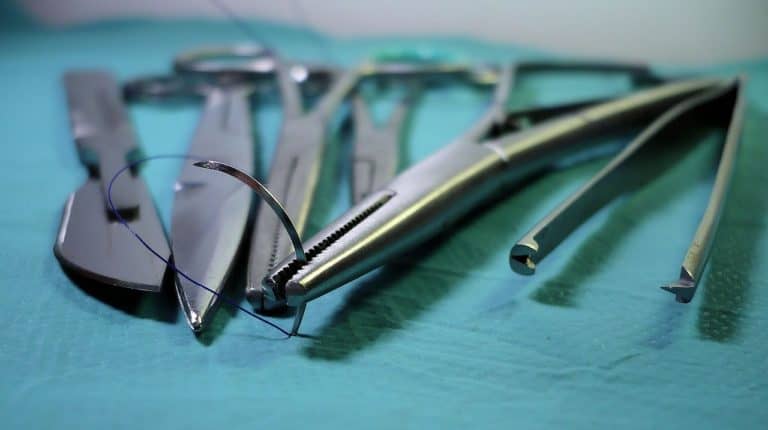Questions about vasectomy reversal may be on your mind if you are among the 5% to 10% of men who eventually decide to have their vasectomy reversed. But which questions about vasectomy reversal should men and their partners ask? To help you along, here are the top 10 questions about vasectomy reversal for men and women to consider.
1. What is a vasectomy reversal?
A vasectomy reversal is a microsurgical procedure during which a specially trained microsurgeon restores the ability of the vas deferens to transport viable sperm in a man’s ejaculate. The ultimate goal of a vasectomy reversal is to restore a man’s fertility and eventually result in pregnancy.
A vasectomy reversal can be accomplished in two different ways:
- Vasovasostomy, which involves reconnecting the two cut ends of the vas deferens by suturing them. A vasovasostomy is performed in 70% to 80% of vasectomy reversal cases.
- Epididymovasostomy, in which the surgeon must suture the ends of the vas deferens to the epididymis in order to bypass a blockage above the vasectomy site
2. How successful is a vasectomy reversal?
Questions about vasectomy reversal always include this inquiry. The more time that passes between a vasectomy and a vasectomy reversal, the less likely the reversal will be successful or that pregnancy will occur. For men who undergo a vasectomy reversal within about 5 to 10 years of a vasectomy, the success rate of the reversal can reach 97% with an accompanying pregnancy rate of about 76%.
Men who wait longer risk a lesser chance of success and of pregnancy. For example, men who wait more than 15 years to have a vasectomy reversal have about a 70% success rate and a lower chance of having a baby.
The success of a vasectomy reversal and subsequent pregnancy also depend on the condition of the vas deferens and the sperm. For example, if a surgeon discovers sperm in the vas deferens, the man has about a 90% or greater chance that the vasectomy reversal will be successful and a 60% to 70% chance that a pregnancy will occur. If a man’s vas fluid is healthy but there are no sperm, the success rate of the vasectomy reversal is about 70%. In both of these scenarios, a man can have a vasovasostomy.
If, however, a man has a blockage above the vasectomy site, a different type of vasectomy reversal procedure, called an epididymovasostomy, can be performed. An epididymovasostomy involves suturing the cut ends of the vas deferens directly to the epididymis, which bypasses the blockage. The success rate of an epididymovasostomy is about 50% to 60%.
3. Why should a man not have a vasectomy reversal?
This is one of the questions about vasectomy reversal some men and their partners don’t always ask, but should. Couples should realistically evaluate their finances before proceeding with a vasectomy reversal. The procedure is costly (and often not covered by insurance), and the costs and responsibilities associated with raising a child are enormous. Men should not have a vasectomy reversal if they are being coerced by their partners/spouses or family members.
Some physical conditions can make a man a poor candidate for a vasectomy reversal. If a man’s testicles or vas deferens were damaged during the vasectomy (a rare occurrence), a successful vasectomy reversal cannot be guaranteed and is not recommended. Men who have shrunken testicles should not get a vasectomy reversal.
4. How much does a vasectomy reversal cost?
A vasectomy reversal can cost between $5,000 and $13,000 or more. The final cost will depend on whether the surgeon performs a vasovasostomy or an epididymovasostomy, the area of the country in which the surgery is performed, and the surgery location (e.g., doctor’s office, clinic, or hospital). Questions about vasectomy reversal should include a request for a cost breakdown, such as the surgeon’s fee, anesthesia, and facility charge. Some doctors include the costs associated with follow-up visits for checking semen samples in their charges, while others do not.
Surgeons often recommend men consider banking their sperm during a vasectomy reversal in the event the surgery is not successful. There are additional costs associated with both harvesting the sperm and banking it, including a yearly fee to store the sperm.
Insurance companies typically do not cover a vasectomy reversal nor sperm banking, so couples should be prepared to pay out of pocket. Among the other questions about vasectomy reversal you should ask in this category is how to pay for the procedure. You may get a discount for a cash payment.
5. How long does it take to recover from a vasectomy reversal?
A vasectomy reversal is an outpatient procedure, so men can go home shortly after the surgery is done, although someone should drive them. All patients should follow their surgeon’s instructions for post-operative care, but here are some general guidelines.
Men should rest in bed for at least the first 24 hours after a vasectomy reversal and restrict their activities for at least four to five days. All heavy lifting and physical exertion should be avoided for three to four weeks. Placing an ice pack on the scrotal area intermittently for several days can keep swelling and pain to a minimum, and pain relievers such as acetaminophen alone or with codeine can help.
Among the questions about vasectomy reversal is “when can men have sexual intercourse again?” Men should not attempt to ejaculate or to have sexual relations for up to 30 days after a vasectomy reversal. After that time, men will be asked to provide a semen specimen so their doctor can check for active sperm.
6. How long does it take to perform a vasectomy reversal?
The vasovasostomy can take anywhere from 2 to 5 hours, although the average is 3 to 3.5 hours. An epididymovasostomy can take one to two hours longer than a vasovasostomy.
7. How soon after a vasectomy reversal is a man fertile again?
It can take several months and occasionally more than a year for fertility to be restored. A vasectomy reversal can result in pregnancy in about 40% to 75% of cases. If a vasectomy reversal is not successful, in vitro fertilization or a repeat vasectomy reversal are options for couples to consider.
8. Does a vasectomy reversal change a man’s sex drive or ability to have an erection?
This is one of the most common questions about vasectomy reversal, and the answer is “no” to both concerns. A vasectomy reversal does not involve any structures that have an impact on a man’s sex drive or his ability to achieve an erection.
9. What risks or complications are associated with vasectomy reversal?
The risks or complications associated with vasectomy reversal are similar to those men may experience after a vasectomy. For the first few days after a vasectomy reversal, you will likely experience some pain and swelling around the surgical site. Infection is a possibility, and antibiotics can clear up an infection within a few days. Some men experience nausea, headache, constipation, and muscle aches after surgery and/or the anesthesia for a day or two. There is also the possibility blood will accumulate inside the scrotum. This is called a hematoma and can be painful. Your doctor can drain the hematoma, but in a small number of men hematomas can recur.
10. What factors associated with a vasectomy could affect the success of a vasectomy reversal?
Men who had the ends of the vas deferens cauterized face a greater challenge to having a successful vasectomy reversal than men who had the cut ends of the vas deferens clamped or tied. On the other hand, the development of sperm granulomas after a vasectomy could increase the chances of a successful vasovasostomy, because having granuloma reduce the chance of blockage of the epididymis.
Don’t hesitate to ask questions about vasectomy reversal of your doctor and other medical professionals. It is helpful to write down your questions about vasectomy reversal and bring the list to your consultation.







